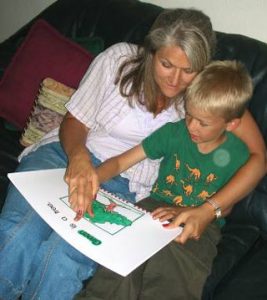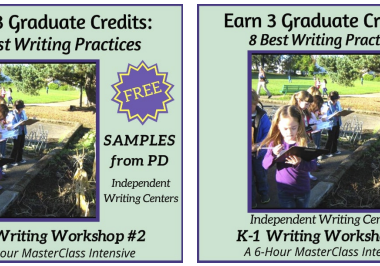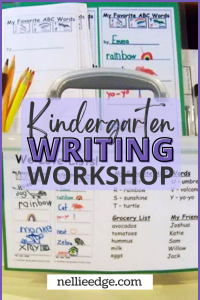 Providing repeated reading experiences using the Neurological Impress Method (N.I.M.) is a simple, yet powerful, strategy for developing fluent readers. It was originally devised and researched by R.G. Heckelman, PhD in the 1960’s and since has been proven successful for thousands of young readers. This approach of oral read-along practice provides one-on-one language modeling using a fluent reader in a relaxed, non-threatening environment. It is ideal for our “parents as partners” nightly reading at home—especially with the predictable literature of songs, poems, and rhythmic rhyming language.
Providing repeated reading experiences using the Neurological Impress Method (N.I.M.) is a simple, yet powerful, strategy for developing fluent readers. It was originally devised and researched by R.G. Heckelman, PhD in the 1960’s and since has been proven successful for thousands of young readers. This approach of oral read-along practice provides one-on-one language modeling using a fluent reader in a relaxed, non-threatening environment. It is ideal for our “parents as partners” nightly reading at home—especially with the predictable literature of songs, poems, and rhythmic rhyming language.
Your child will already have experienced several shared reading experiences with these books, or with the songs and rhymes in their “I Can Read” notebook. We have used this language to develop oral language fluency, reinforce phonics skills, and teach high-frequency words. Your child may have dramatized the language, danced to the rhythm, or sang and signed the lyrics. You will probably find that your child already has a memorable sense of at least part of the print.
Now you can help train your child’s eyes to sweep across the page, as his finger movements and voice are all synchronized to the words. Your child will greatly benefit from repeated readings of the familiar language along with your voice as a model. Soon he will be able to independently perform the reading with fluency, expression, confidence, and delight.
How to do it:
- Dr. Heckelman recommends that the reading tutor or parent sit to the right of the child, with the child slightly in front so the parent’s voice can be close to the child’s ear. We think it is equally important to be in a comfortable and relaxed setting.
- Let your child choose the song picture book or anthology pages of poems and rhymes that they want to practice reading with you.
- Read the material with your child, using a little louder voice and reading with fluency, careful articulation, and enthusiasm.
- Move your finger and your child’s under the spoken words in a smooth continuous manner, matching the precise speed of the verbal reading. Help the child gradually take over the tracking.
- Pay special attention to the end of a line. Move the finger rapidly back to the beginning of the next line to train the eye. Keep everything synchronized. Reread a line, page, or section of a book repeatedly to build fluency.
- At no point should you correct, teach the child, or ask questions. The focus is on the fluency of language and making the voice-to-print match.
- You might call this “practice for performance reading.” Keep these “read together” sessions short and enjoyable. This should only take 5 to 10 minutes of your nightly reading time.
- Compliment your child for their effort and progress. Soon they will be able to perform the reading of this book or poem for any appreciative audience.
- From time to time we will send home audiocassettes with accompanying books. Reading aloud with an audiocassette also produces accelerated reading gains.
Get our weekly blog for more high-impact strategies and free resources!













